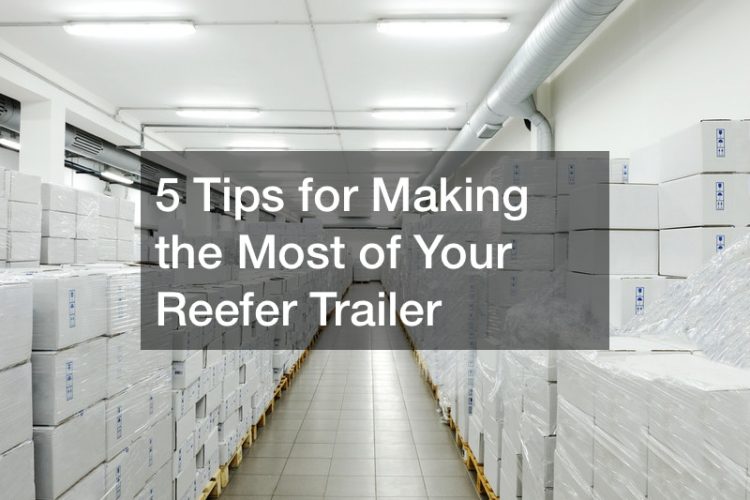
There are times in which mass food needs to be stored for individuals. Some examples of times in which reefer truck delivery is used are when food is being packed for “Feed my Starving Children” programs, programs that feed the homeless on the street, etc. Now, one of the important things to consider is learning what a food-grade trailer means. These are large trailers that store all kinds of food for people. Sometimes, these are not just for the homeless either. Rather, they can also be used for special events, such as large gatherings, parties, etc. This is where a refrigerated trailer rental would come in handy as well. Moreover, an important question to ask is as follows. How long can a refrigerated truck trailer go for, or, how long is a reefer trailer’s life span? Moreover, what is the importance of reefer trailer aluminum flooring? These factors depend on the size of the reefer, how much food is being carried, whether the reefer has been used before and is in good condition, etc. For example, naturally, a full-size reefer trailer would be more durable and could hold more. This would be especially useful for various events and gatherings. These are some important factors, in relation to a reefer freezer.

Right now there are about 500,000 reefer trailers in operation throughout the United States. The average new or used reefer trailers are somewhere between 28 and 53 feet long, but never more than 13.4 feet high, and the largest carry about 44,000 pounds worth of refrigerated goods. There’s incredible demand for shipment via reefer unit, and that demand is only going up as the economy booms.
Whether you’ve already got your new reefer trailer or you’re looking at used reefer trailers and hoping to start up in the market, you should know where to look to find the best loads and how to carry them in the best way.
Think Ports
One way to get plenty of loads is to make sure they are hanging out where the loads are. The biggest ports in the United States are located in Long Beach, California; Los Angeles, California; New York/New Jersey, the Seattle/Tacoma area, and Savannah, Georgia. You can always guarantee plenty of loads coming out of these important transit areas.
Know Your Load-to-Truck Ratio
Certain cities have a high ratio of load to truck. Some of the best areas to look at when it comes to outbound markets for reefer loads are Atlanta, Georgia; Los Angeles, California; Ontario, California; Dallas, Texas; and Tucson, Arizona. Right now Atlanta is running low to truck ratios around four, while LA runs just under six. Tucson, AZ load ratios are just over 18.

Know Your Danger Zones
Certain roads are particularly dangerous for truckers, and it’s worth your while to be familiar with them. Whether you’re driving a new reefer trucks or used reefer trailers, watch out for these:
- I-10 through Alabama
- I-95 through Florida
- Highway 75 through Idaho
- I-40 through Arkansas
- US-1 through Florida
- M-20 through Michigan
- I-80 through Nebraska
- Highway 5 through Colorado
- I-70 through Maryland
- SC-35 through South Carolina
Your best bet for staying safe is to adjust your routes when possible, adjust schedules to take advantage of less crowded times, to varying loads, and increase inspections to make sure that your loads are being carried safely and the trucks are in great shape.
Know Your Other Dangers
The Department of Transportation releases data every year that can help you understand what’s the most dangerous threat to a truck. More than half of all truck accidents involve at least one defect in the vehicle. This means it’s absolutely essential you carefully inspect used reefer trailers before you buy them and that you keep up a regular and consistent inspection schedule. Part of reefer trailer cost is upkeep.
Another 30% of truck crashes in the United States are caused by equipment failure. These usually involve the brakes, the lights, the transmission, or an overload of the calls of the trailer to fail. The final big element is bad weather. Rain, fog, and snow are to blame for almost 15% of accidents.

Be a Good Driver
It’s a good idea to avoid the worst roads when possible and to keep your equipment in great shape. But you also need to make money and get plenty of loads, so it pays to bear in mind the fundamentals of truck driving and to make sure that you and every driver in your company is following them.
- Always pause before entering an intersection. Hopefully, every driver knows that the first and last car and any intersection are the most likely to get into an accident, but this is even truer when it comes to trucks. You can’t move or stop as quickly as a car so always count to four before you start moving.
- Look ahead as far as you can see. Don’t get caught in the trap of paying attention only to what’s right in front of you. Always look as far ahead along the road as you can.
- Use your jake brake wisely.The jake brake helps ease the pressure on the wheel brakes and should be used when you’re going down slopes. However, always remember to avoid using this break in rain or snow. Also remember to operate it in the shifting range in order to spare the motor.
Reefer truck and trailer loads are money-makers. To make the most of your carrier reefer, go where the money is, but stay safe along the way.
